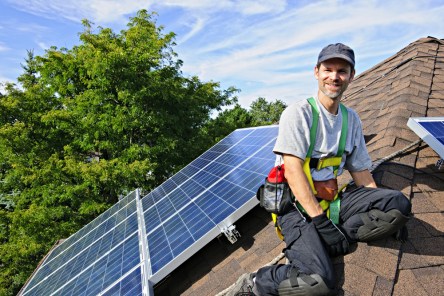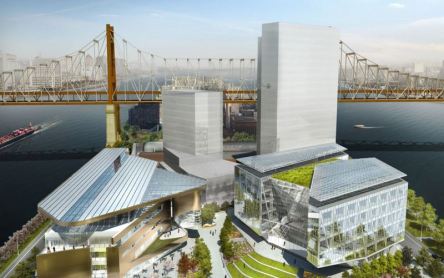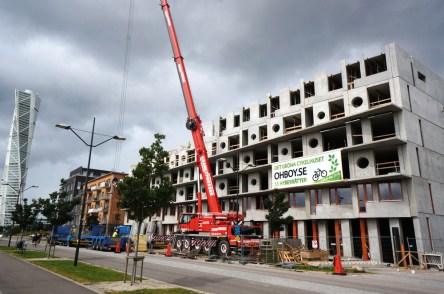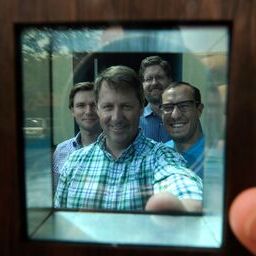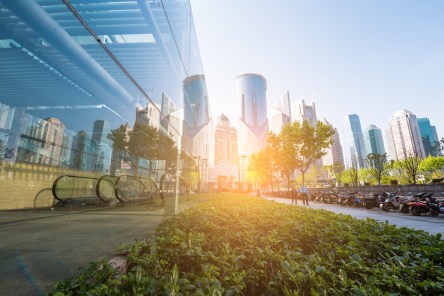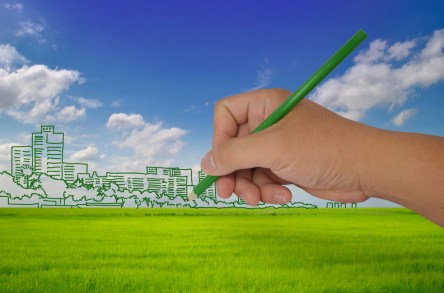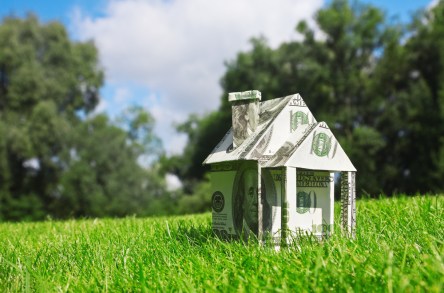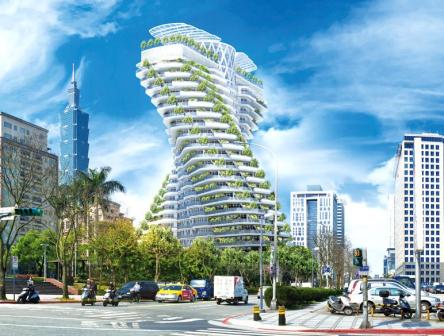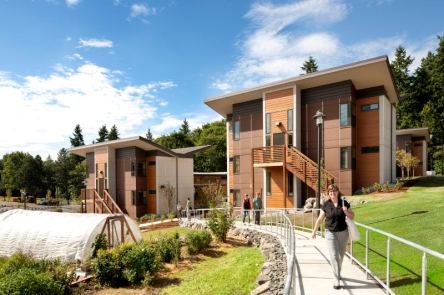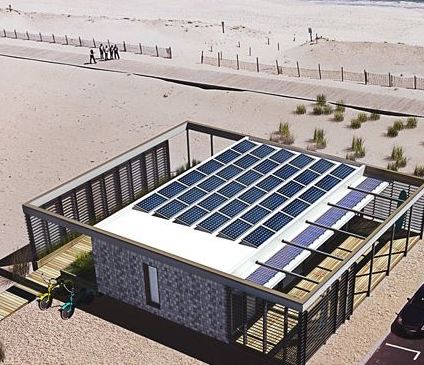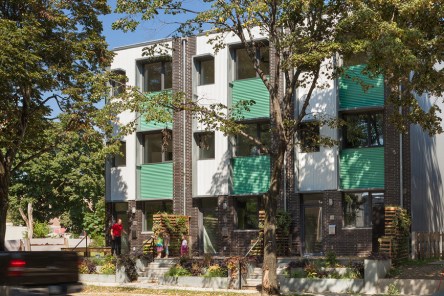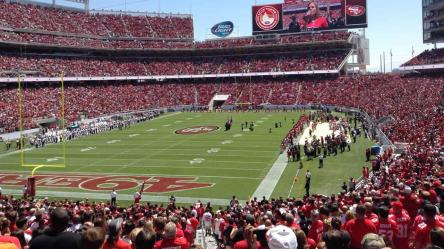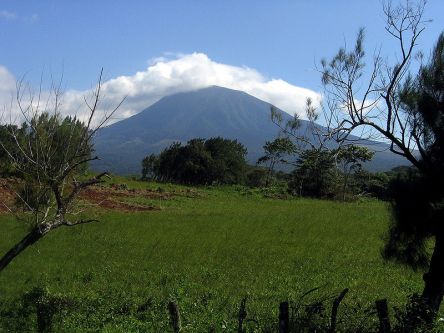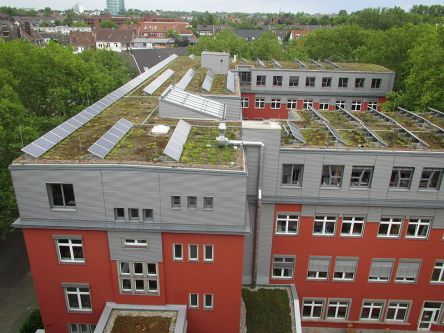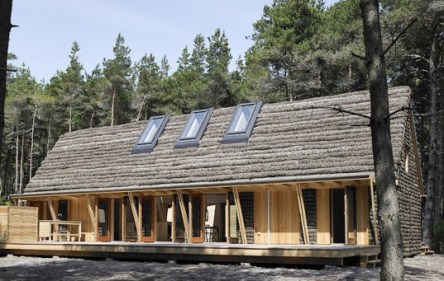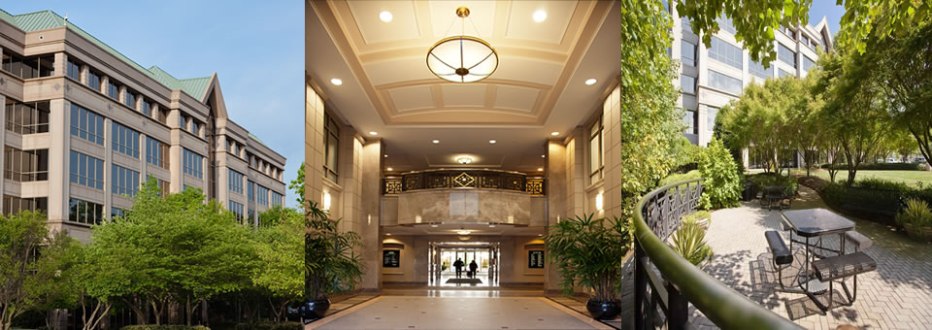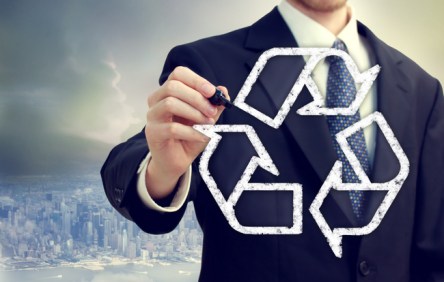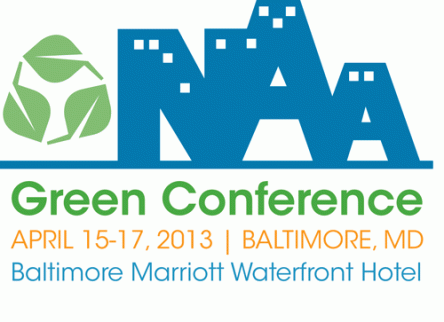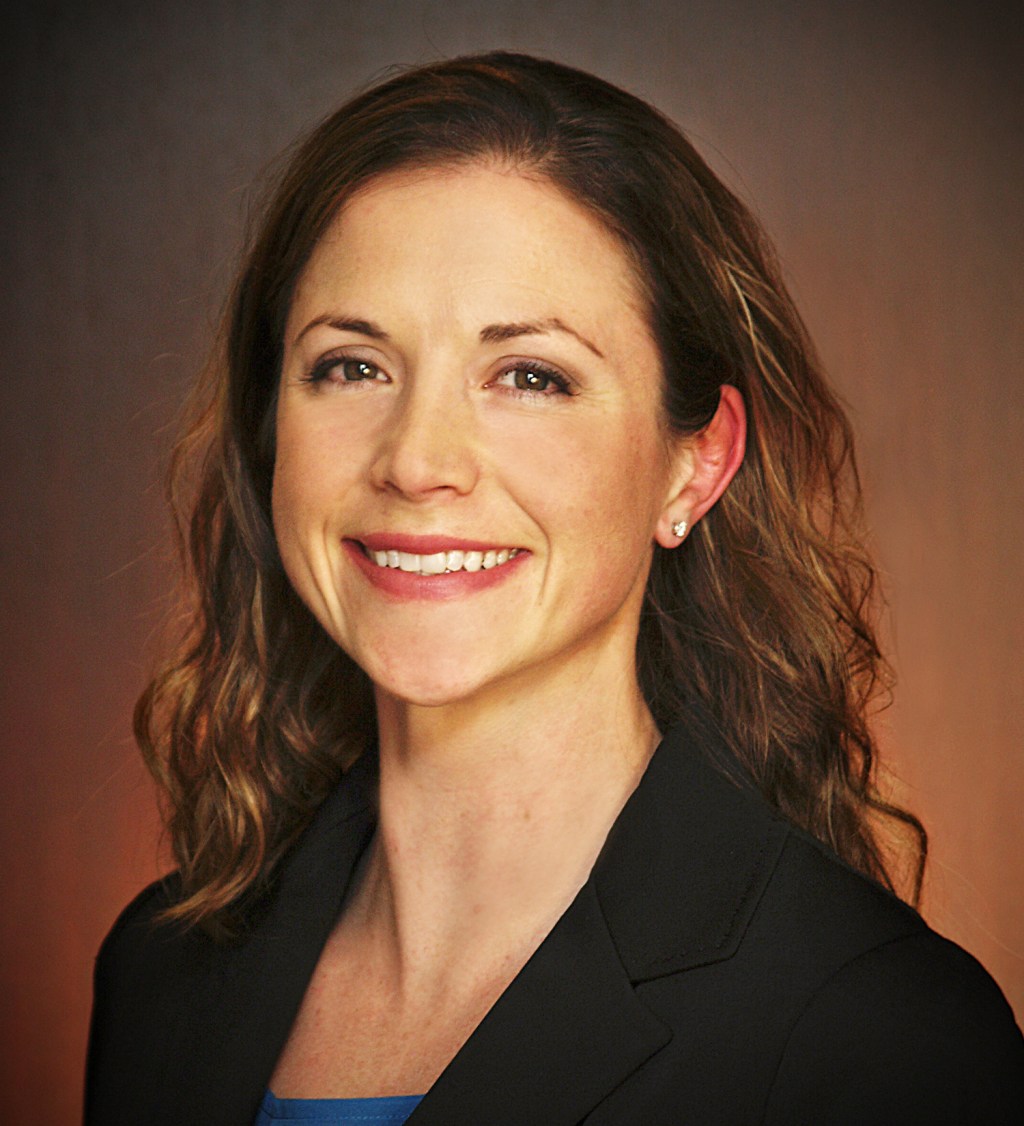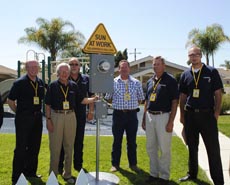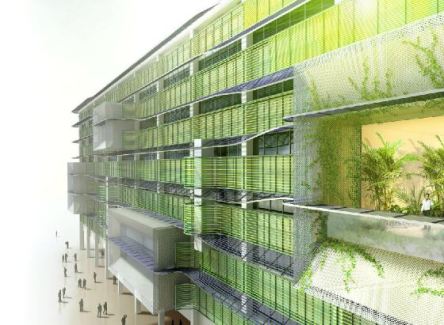A recent study evaluated home listings in the top 200 metros in the United States. The analysis explored the price of listings with any of seven green features and compared them to conventional listings in the area. The study then identified markets where the cost of homes with green features came in lower than the cost of conventional housing. Where Green Dollars Go Farthest California excels in moderately priced sustainable homes. In Salinas, buyers can find eco-friendly listings that cost 14 percent less than the median home price for typical properties. This translates to buyers saving an average $233, 850 on homes with solar panels, for example. In San Jose, homes with at least one eco-friendly upgrade can cost 5 percent less than conventional homes. That may surprise many who are searching for a property in one of the hottest markets in the nation. In Connecticut, the Bridgeport-Stamford-Norwalk metro has a median home price of $792,050. Earth savvy buyers can pursue green listings and save an average of $37,050 for an ENERGY STAR certified home. Fort Collins, Colorado leads the list of metros where buyers can snag a home with green features at comparable cost to a conventional home. More than 35 percent of the town’s April listings had at least one eco-friendly upgrades. In those homes, the median price per square foot fell on par with their less sustainable counterparts. In some cities, the listing price of homes with sustainable features is higher than conventional homes but not by much. In Dallas, the median price per square foot is about 4 percent higher than homes without green features. Green Becomes More Affordable Housing with sustainable features carry a loftier listing price than conventional homes in many metros. Yet overall, the cost of green...
Energy Management
Future of Savings + Retention
Transparency Market Research reports that the global energy management systems (EMS) market continues to grow. The market will show an estimated compound annual growth rate of 13.4 percent between 2015 and 2023, leading to a valuation of $36 billion by 2024. The estimate reflects ongoing confidence in the benefits of sustainable initiatives. Increasing Demand Several factors contribute to the rising demand for EMS. Current fossil fuel sources lack security and sustainability. The long-term projections by the International Energy Agency forecast a rise in such energy costs. As a result, organizations—particularly office, retail, and industrial spaces– strive to mitigate rising expenses by decreasing dependency on non-renewable fuels. Data gathered by EMS highlights opportunities for organizations to use less energy while maintaining optimal site performance. Smarter energy use will minimize waste and keep operating costs low. EMS also contribute to higher property values. The value of buildings with sustainable features exceeds the value of conventional structures by a median increase of 7 percent, reveals a joint study conducted by Dodge Data & Analytics, United Technologies Corporation, and World Green Building Council. The Drive Toward Healthier Buildings report states that 73 percent of green building owners are able to increase their leasing rates and 62 percent achieved higher asset values. EMS help buildings achieve and maintain the standards needed for green building certifications, increasing the ability to lease and resale sites with higher value and fewer concessions. The drive for increased productivity, employee satisfaction and retention also contributes to the increasing demand for EMS. Research points to occupant health as a component of employee satisfaction and retention. In The Drive Towards Healthier Buildings, 79 percent of respondents believe wellness-focused buildings will lead to improved employee satisfaction. Business owners listed products that enhance thermal comfort, such as EMS, among the...
Tallest Passive House...
Cornell Tech Tower
New York will soon boast the world’s tallest passive house building. Cornell Tech tower will break international records and set a new standard sustainable building. Cornell Tech residential tower is a collaboration between Yardi client Related Companies, Hudson Companies, and Cornell Univerty. The residential high-rise broke ground in 2015. Upon completion this fall, it will stand 26 stories high and cover 270,000 square feet. It houses 356 rentals with floor plans ranging from studios to three-bedroom suites. Amenities include a rooftop deck with city views, a lounge, gym, and bike room. To promote an atmosphere of learning, the site hosts numerous public spaces. These tech-ready meeting rooms encourage interaction between faculty and students. The residential towers provide easy access to the East River tram and metropolitan subway. Both connect to Manhattan and its transit hubs. Cornell Tech residential tower will be the tallest Passive House building in the world. The Passive House, or passivhaus, design concept originated in Germany. It is a performance-based standard without dictated methods of construction. Passive cooling techniques such as strategic shading, air circulation and ventilation techniques keep buildings comfortable in warm weather. In cool weather, the buildings make efficient use of the sun, insulation, internal heat sources and heat recovery. Passive House buildings rely less (or none at all) on conventional heating and cooling systems. Internationally, Passive House designs can operate using 60-90% less energy than conventional buildings. “In thinking through the right type of building for a campus that honors innovation, one of the first things we came up with was Passive House construction, which could be a game-changer for the residential industry,” says David Kramer, a principal at Hudson Companies during an interview with Planning Report. It was after touring several large Passive House projects in Vienna...
Pedal Power
Bike Apartments
In bike-friendly Sweden, a new apartment complex includes custom design elements aimed at encouraging residents to ditch cars in favor of pedal power. For many urban apartment dwellers, parking spots and constant traffic severely undercut the benefits of living within the city limits. Sure, public transportation, walking, and cycling are all reasonable alternatives to private automobiles, but sometimes the hassles outweigh the benefits. In Malmö, Sweden, a new apartment complex is ditching carports for bike racks in the hopes that future tenants will embrace a car-free existence. “It’s a perfect city for biking,” says Cykelhuset Ohboy spokesperson Ellen Mendel-Hartvig. “It’s super flat, and you can get anywhere within 15 minutes.” Centrally Cycling Located just minutes from the city center, Cykelhuset Ohboy, a 7-story bicycle house/hotel, is an easy trek by foot or bike from major shopping districts and even the central train station. Large delivery mailboxes will help resident shop online for items that might be too difficult to transport without a car, though the building’s fleet of cargo-bikes will also help with heavy loads and even help parents transport their children to school or daycare. “The strategy is to look at why people have to use cars, and substitute bikes, “Cord Siegel, one of the architects at Hauschild + Siegel, which designed Cykelhuset Ohboy, tells Fast Company in a recent interview. The Un-Motor Lodge In addition to 55 one to four-bedroom units, Cykelhuset Ohboy will also double as a hotel, with 31 lofts available for nightly rentals. Available for shorter tenancies – a few weeks to a month or two, the 237-sqft lofts include a small kitchen and can sleep up to three people. In a play on the traditional “motor-lodge,” guests will be able to ride their bike right up to their...
Solar Surfaces
Energy Produced in Place
A revolutionary new technology can put solar cells on almost any surface, transforming traditional solar energy installations and turning buildings into power generators. Rising up from suburban sprawl like the mythical Oz, the downtown business district of any major metropolis repeats a familiar scene: high-rise office buildings, covered in windows, reaching for the sky. Skyscrapers may typify city skylines, but all that reflective glass also represents an incredible opportunity. Imagine harnessing all that surface area by converting those reflective surfaces into powerful solar arrays. That’s the idea behind Santa Barbara-based startup Next Energy Technologies groundbreaking solar technology. Surface Generation Currently, buildings account for anywhere between 40-50% of total global energy use and over half of all CO2 emissions. In addition, electricity represents one of the largest variable operating expenses building owners face, accounting for as much as 20-25% operational budgets. Many facilities successfully reduce consumption by incorporating renewable energy onsite and energy efficiency strategies like LED lighting and energy management systems. But what if the buildings themselves could generate power? The concept is deceptively simple: use transparent solar cell ink to print photovoltaic cells directly between standard dual-pane windows. The genius lies in the execution. For Next Energy founders Daniel Emmett and Corey Hoven, it’s all about making solar efficient, customizable and inexpensive. Windows Transformed “The most important difference with our technology is the transparency,” Hoven explains. “While all other solar cells are opaque and absorb all visible light, the windows that use our system look like conventional windows. They can allow the visible spectrum to get through, which makes our solar cells highly efficient without changing the appearance or functionality of the window.” Tinted windows can help manage indoor temperatures and lessen heating and cooling costs, but adding a solar component ups the...
Bentall Kennedy
ROI on Sustainable Assets
Yardi client Bentall Kennedy recently released a report that may change the way that the industry sees sustainable building. Giselle Gagnon, Senior Vice President, Strategic Resources Group explains, “Our team at Bentall Kennedy has long been committed to implementing sustainability practices across our managed property portfolio – for us it demonstrates to our clients and tenants that we are investing soundly and sustainably,” she says. “So we commissioned a study to seek research-based evidence to test our hypothesis that green office building certifications deliver higher value.” Sustainability within the commercial sector is a vital component of environmental health and corporate efficiency. Commercial properties are responsible for 81 percent of electricity consumption across North American and Europe. The industry also accounts for 40 percent of all energy consumed in those continents. Until now, stakeholders did not have the resources needed to determine which green building certification would be the most effective, yielding the highest returns and making the smallest impact on the environment. Previous studies fell short in a number of ways: All were based on publicly available information, such as posted asking rents, green building certifications and the sale price of assets. The majority excluded data on concessions and their effect on net rents. Many studies overlooked intangible benefits entirely. None examined actual in-depth, diverse metrics across a large office portfolio for as long as 10 years. As a recognized leader in Responsible Property Investing, Bentall Kennedy filled those voids. The company commissioned a comprehensive, long-term study on the benefits of sustainable certifications for commercial properties. In late 2015, The Journal of Portfolio Management published a report of the study entitled, “Green Certification and Building Performance: Implications for Tangibles and Intangibles.” “The study is unique in that, in addition to financial metrics, it looks...
LEED Losing Favor
New Certifications Gain Ground
United States Green Building Council (USGBC) Leadership in Energy and Environmental Design (LEED) program may be losing clout as the leader of sustainable building certifications in America. Developers seek alternative certification methods to cut capital costs while keeping buildings green. When JDS Development Group CEO Michael Stern spoke at a recent real estate summit in New York, he didn’t mince words: “I think the LEED criteria is totally arbitrary and LEED has basically devolved into a self-sustaining revenue machine for LEED consultants without actually moving the bar that much,” he said. “You can have a LEED project basically anywhere near transportation. You qualify for enough points if you pay enough money.” Others on the panel shared his sentiments. Dissatisfaction with the cost of certification questions the data LEED shares on the costs of eligible projects. According to the Dodge Data & Analytics and United Technologies Corporation, about 70 percent of respondents quote high perceived cost as the biggest challenge to sustainable building. A Health Facilities Management report claims that LEED certification capital costs can exceed 10 percent of conventional construction. Conversely, LEED’s report, “Perspectives on Capital Costs Premiums and Operational Benefits” suggests that the capital costs of hospitals exceeding 100,000 square feet barely reach 1 percent of conventional costs. A US News editorial asserts that LEED credentials on government buildings do not add value. Moreover, taxpayer returns are lower than promised. The article suggests that, in spite of the costs, regulations are unlikely to change since governments reap millions of dollars in permit fees. Fortunately, the cost discrepancies have not turned LEED cynics away from sustainable construction. Developers are investing in alternative accreditations or use LEED as a guideline without paying for the certification. Builders have several green building certifications from which to choose. The newest...
Build Green & Save...
Fannie Mae and FHA Multifamily
Fannie Mae and FHA have made green multifamily housing financing more attainable. Sustainable features will now be a deciding factor in underwriting and interest rate calculations. Three new programs offer rate incentives for new construction and renovations. The financing options come on the heels of several reports that highlight the mutually beneficial relationship between sustainability and multifamily housing. Eco-conscious multifamily properties receive lower utility bills and fewer defaults. Energy saving tools, such as Energy Solutions, can cut costs by identifying leaks, recovering overage costs, and automating both energy management and utility billing. Convergent billing alone improves utility cost collection by 20 percent. Additionally, lower utility bills are believed to attract more stable tenants. By reducing utility costs, residents will be better able to pay rent and less likely to default. HUD Secretary Julián Castro reports that a quarter of renters spend more than 50 percent of their income on housing. The recommended allocation is 30 percent or less. Energy cost savings and decreased defaults make green properties more profitable for lenders. In order to receive a lower interest rate with Fannie Mae, properties must cite a 20 percent savings on energy or water costs. Such properties can receive up to 40 basis points off of standard pricing, reports CBRE. Especially for multifamily affordable housing, Fannie Mae’s Green Preservation Plus (formerly known as Green Refinance Plus) offers 4-5 percent greater loan proceeds. The additional funds may be used to pay for energy efficient retrofits and upgrades. There is no limit or cap on loan sums, though loans over $50 million will require HUD consent. Qualifying properties must be at least a decade old. Energy- and water-saving improvements must equal at least 5 percent of the original mortgage loan amount. Borrowers are also required to track...
Vertical Forests
Multifamily Innovation
Traditional sustainable buildings capitalize on resource conservation and economic efficiency. With vertical forests or “treescrapers,” innovators in Europe and Asia are meeting sustainability standards while expanding upon the benefits of greenery for multifamily residents. In the Unites States, sustainable construction highlights efficient appliances, energy and water conservation. Exceptional properties include recycled materials, passive temperature control, and meet net-zero standards. Integrating greenery into construction is still considered a rarity. Yet the exceptional features are becoming the standard in developed nations throughout Europe in Asia. In addition to resource and costs efficiency, policy makers enforce the creation of structures that improve resident wellbeing and environmental health. To name a few, Germany has led Europe with sustainable mandates for new construction; green roofs with solar panels are required to cover 50 percent of all new commercial buildings in France, as well as notable sustainability mandates for residential construction; and Singapore’s aggressive blueprint for sustainable investments will keep the nation at the top of the list for earth-conscious countries in Asia. It is within this progressive atmosphere that the first vertical forests broke ground in 2011. Vertical forests and treescapers are urban buildings that take greenery beyond ground-level landscaping and atriums. Trees, shrubs, and groundcover are incorporated throughout the structure. Multifamily owners and managers have much to gain by these stunning construction techniques. By investing in greenery throughout the property, owners, managers, and residents position themselves to experience: resident retention increased tenant satisfaction reduced stress less noise pollution reduced CO2 increased oxygen output natural storm water and runoff management reduced heating and cooling costs Architect Vincent Callebaut’s Agora Tower in Taipei, Taiwan is one of many treescrapers currently under construction. To be completed this year, the Agora Tower has received LEED Gold certification. The design is also Green...
Dorm Rooms Get Green
Sustainable Collegiate Living
As demand for modern, energy-efficient and environmentally friendly campus housing continues to grow, colleges and universities are embracing a new era of sustainable student residences. Recent estimates by the DOE, EPA Energy Star, and ACEE reveal student housing represents a huge opportunity for energy efficiency in multifamily housing. With the chance to reduce energy use by up to 30% at new or existing properties, any energy efficiency or sustainability effort is sure to quickly meet (and probably surpass) initial ROI estimates. Currently, multifamily properties accumulate more than $30billion in energy costs annually – sometimes paid by tenants, but other times falling into the lap of owners and property managers. With an estimated $3.4 billion in energy savings possible, it makes sense for the student housing industry to focus on sustainability. Additionally, sustainable student housing presents an enormous marketing opportunity for property owners and managers: a recent poll revealed 60% of college students believe protecting the environment should be prioritized, and a whopping 76% support policies encouraging energy efficiency (rather than seeking new energy sources) to meet energy demands. Stylish and Sustainable in Seattle Initially conceived as a traditional, multi-story dorm designed to house 130 students, Bastyr University’s 2010 student housing project eventually transformed into a sustainable, LEED certified student village. Located just east of downtown Seattle, Bastyr University prides itself on its position at “the forefront of developing the model for 21st-century medicine.” With a multidisciplinary curriculum focused natural medicine, Bastyr University readily assumed the mantel of sustainable student housing pioneer. Bastyr’s Student Village is comprised of an 11-cottage complex spread out over 12 acres on Bastyr’s 52-acre campus. Each three-story cottage can house up to 12 students who have access to common areas, a central courtyard and a variety of sustainable features...
SURE HOUSE
Ultra low energy home
The SURE HOUSE strikes a balance between mitigating and protecting against the vagaries of climate change and extreme weather all under one charming, beach cottage roof. The winner of the US Department of Energy’s Solar Decathlon for 2015, the SURE HOUSE is an entirely solar-powered structure designed to make the most of the weather, including sunny days and stormy nights while providing its inhabitants with a comfortable, modern dwelling. Designed by the Stevens Institute of Technology, the SURE HOUSE rose to the top of a roster including 14 collegiate teams competing for a shot at developing the country’s most innovative, sustainable and marketable solar home. Occurring every two years, the Solar Decathlon challenges participants to design efficient, economical, and visually appealing solar-powered habitation. The teams must construct and operate their proposed habitats, which are then judged on “affordability, consumer appeal, and design excellence with optimal energy production and maximum efficiency.” With an eye toward the challenges posed by climate change and unpredictable weather patterns, the SURE HOUSE splits the difference between a charming beach cottage and hurricane safe-house. During sunny, mild days, the building’s design takes advantage of outdoor space by opening up to reveal a combination of decks and patios modeled after “the quintessential 60’s style modern beach cottage.” Its integrated solar panels, meanwhile, can produce up to 10,000 watts of power. While the design may be inspired by the 1960s, SURE HOUSE only requires 90% less energy than a conventional house. Its “ultra-low energy consumption” comes primarily from the incorporation of highly efficient appliances, including a solar-powered electric water heater and an energy recovery ventilation system, along with zoned heat pumps for heating, cooling, and dehumidification. Additionally, an extremely efficient building envelope helps manage indoor temperature and reduce HVAC demand. While the...
A Passive Phase
Sustainable construction trend
With the U.S. building sector accounting for 7% of global primary energy consumption, residential and commercial property developers are turning towards modern solutions, like Passive Homes, to increase energy efficiency in new and renovated properties. Big Apple Energy While it might be “the city that never sleeps,” it wouldn’t hurt to turn a light off once in a while! Though it’s probably no surprise to learn that many of New York city’s most expensive buildings aren’t particularly energy efficient, in truth the numbers are quite shocking: 70% of the city’s emissions are generated from New York City buildings. Even more eye opening…2% of those buildings account for more than half of the city’s energy use. According to the advocacy group Climate Works for All, ten of New York’s most expensive buildings score an “F” in terms of energy efficiency based on Energy Use Intensity. With several more luxury high rises and condominiums in the works, many property developers are looking for ways to lower the energy footprint of their buildings. One solution: Passive House Technologies. A Borough Apart As all things fashionable and hip, Brooklyn is the epicenter of New York City’s passive house movement. In fact, a majority of the New York’s 28 passive building projects are located in or around Brooklyn, including homes in Williamsburg, townhouses in Park Place, and condominiums in Prospect Heights. Some of the passive properties are new constructions projects, but many more are retrofits of existing structures, including a historic house in Brooklyn Heights whose classic façade remains unchanged, despite the addition of super insulation around its double-height windows. In all, Brooklyn is home to more than 20 residences and commercial buildings that fit the passive house guidelines, but because many property owners follow the standards without seeking...
Golden Bowl
Levi's Stadium hosts Super Bowl 50
On February 7, 2016, the Carolina Panthers and the Denver Broncos will battle it out at Super Bowl 50 in the LEED Gold Certified Levi’s Stadium; one of the nation’s most technologically advanced sporting venues. Three years ago, a thrilling super bowl featuring a rally by the San Francisco 49ers during the second half turned a would-be shutout into a hard-fought, 34-31 win for the Baltimore Ravens. Though the game was action packed, one of the most startling moments happened right after halftime when the entire 73,000-seat arena went dark for 34 minutes. When the lights returned, the 49ers rallied, closing a 28-6 halftime score and almost sparking what might have been “the greatest comeback in Super Bowl history.” Clearly the 49ers took that blackout to heart, as evidenced by the team’s own Levi’s® Stadium, a state-of-the-art sporting facility touted as “the most high-tech stadium in the world.” An Homage to the Future “The stadium is built in the middle of the heart of technology,” declares Senior VP of NRG Business Solutions Robert Gaudette in an NRG video of the building’s construction. “It’s also at the center aisle of the newest thinking around what energy is.” Dan Williams, former VP of Technology for the 49ers expands on how technology was paramount as plans for the building evolved, saying “One of the focuses was ‘let’s ensure that it’s truly a technology driven stadium, and let’s try to adopt what makes Silicon Valley Great.’” Recognized as “2015 Sports Facility of the Year” by Sports Business Journal and “Venue of the Year” by The Stadium Business Awards (Barcelona, Spain), Levi’s® Stadium was also awarded LEED Gold certification by the U.S. Green Building Council (USGBC), the first NFL stadium to earn that designation. “When we looked at building this...
Solar for Affordable
Free, Resilient Energy
The Clean Energy Group recently completed the report, Resilience for Free: How Solar + Storage Could Protect Multifamily Affordable Housing from Power Outages at Little or No Net Cost. The group’s research unveils just how easy and cost-effective it can be to furnish affordable housing with solar energy. The research and new technologies could be a game changer for the industry. The report examines data for multifamily affordable housing communities in three major metropolitan areas: New York, Washington, D.C., and Chicago. The results show that solar + storage can be installed and implemented with zero net cost over the lifetime of the project. Zero. Returns are reaped in a matter of years. Solar has finally become a cost-effective competitor for conventional power sources. The crowning features of solar + storage are especially important in affordable housing. Low-income residents have the fewest resources to pay for the rising costs of conventional energy. Prices for sustainable solar energy have actually decreased, making it more accessible than ever before. Low-income areas are the most vulnerable populations during crisis, particularly housing for seniors and the disabled. Those populations are the least equipped to recover from disaster as they lack the resources and access needed to bounce back quickly. It is important to keep these communities functional until surrounding infrastructure and services resume. Storage and backup batteries have drastically improved in recent years, providing power for affordable housing communities in emergency situations. Such features position sustainable solar as a viable alternative to conventional energy in terms of cost, accessibility and reliability. “There is now no economic or technical excuse to leave low-income and vulnerable people at risk,” Resilience for Free concludes. Precisely how solar + storage works in an affordable housing community will vary by project type. In the...
Yeloha
Panel-less solar power
The price for photovoltaic cells is plunging, in the last six years it has fallen by at least 50 percent. According to a Gallup poll, 79 percent of Americans expressed the interest for the U.S. to develop more solar power. The product is already growing, accounting for 36 percent of all new electric capacity through the first nine months of 2014, according to the Solar Energy Industries Association. Although on an upward swing, solar power has yet a lot of catching up to do. The U.S. Energy Information Administration reports that the United States generated approximately 4,093 billion kWh of electricity in 2014. The most part of the electricity (two-thirds) came from fossil fuels (mainly coal and natural gas), and one-fifth from nuclear. Solar accounted for only 0.4 percent. The reasons are various: the roof is facing the wrong way or needs replacing, there is too much shading from mature trees or other buildings, the renter status which doesn’t give them the right to make such a decision, simply lacking those 10 or 15 grand to pay for installation, or the not-so-good credit that cuts any possibility of financing or long-term purchase agreement. The future looks different. A new sharing platform dubbed Yeloha focuses on a new approach, which combines the power of social networks and the attractiveness of the sharing economy, aiming to offer solar power regardless of location of income level. What’s the plan? Yeloha has two types of customers—sun hosts and sun partners. The sun hosts are represented by the people living under eligible sunny roofs, but can’t afford the costs for the panels. In their case, Yeloha will install its own panels at no cost and give them a portion (typically one-third) of the electricity they produce, for free. In...
Renewable Future
Race to Carbon Neutrality
The United Nations predicts that by spring 2024 the world’s population will reach 8 billion. Meeting the energy needs of the world’s ever-growing population is a hot-button issue, especially in the context of finite carbon-based energy sources and the looming danger of irreversible climate change. While going carbon-neutral can seem like an unachievable goal in its complexity, there are trailblazers whose goals are exactly that: shifting populated environments away from fossil fuel dependency and onto a system of renewable energies. We’ll be taking a look at some the superstars of carbon-neutral environments and renewable energy trailblazers. Costa Rica The 2010 winner of the World Future Council’s Future Policy Award, Costa Rica has long been lauded for its environmental conservation and protection initiatives. But the little Latin American country was the focus of intense global acclaim in March 2015 when it announced that it has generated 100 percent of all its electricity from renewable sources for the 75 days straight of the year. The state-run Costa Rican Electricity Council (ICE) released information detailing that it had managed to avoid using any fossil fuels to generate electricity until mid-March by using a combination of biomass, wind, solar, geothermal and most importantly hydroelectric power plants, boosted by heavy rainfall experienced this year. Under normal conditions, Costa Rica already sources 88 percent of its electricity from renewable sources. Hydroelectric plants provide 68 percent of Costa Rica’s electricity followed by geothermal plants with a 15 percent share, wind farms provide 5 percent, biomass sources under one percent and solar chips in with 0.1 percent. Carbon-zero 2021 The Central American country plans to further expand its renewable power plant infrastructure in a bid to achieve carbon neutrality by 2021, as pledged six years ago. 100 megawatts worth of wind warms...
Glorious Green Roofs
Renewable Future
France, the epicenter of style and fashion, has recently dealt a blow to the detractors of solar panels and green roofs by passing legislation that will require all new commercial buildings to feature green roofs. New buildings constructed in French commercial zones will have to be partially covered by either living foliage or solar panels, under the new law, which, albeit less drastic than its initial form (which would have applied to all buildings and the entire surface of roofs), will have a significant impact. Installing solar panels will obviously add green energy to France’s massive energy appetite. Green roofs will bring their own plethora of environmentally friendly features. Higher costs –bigger returns Green roofs significantly increase the insulation of a structure, thus decreasing the need for air conditioning and heating. According to a recent study by Universidad Politécnica de Madrid and Università Politecnica delle Marche researchers, roofs with dense vegetation are 60 percent more efficient than traditional roofs and can in fact act as passive cooling systems. Furthermore green roofs absorb less heat during the day than traditional roofs, thus lowering the heat island effect that plagues cities, especially large urban environments. This is further exacerbated by the fact that green roofs release less energy during the night than they absorb during the day. Moreover, green roofs absorb a large quantity of rainwater, reducing runoff, decreasing the pressure put on city sewage systems, especially during large weather events. When local and/or drought-resistant flora is used for green roofs, there is little to no added water consumption. Green roofs also contribute to healthier environments by absorbing pollutants and releasing oxygen and providing shelter and nesting places for birds and small local fauna, contributing to local biodiversity. Green roofs can also be used as gardens...
Seaweed Siding?
Alt Insulation from the Earth
Building smarter requires low upfront costs, quick returns, and mechanisms to protect the longevity of our investments. A new wave of insulating materials can reportedly do all of that for our properties, so why haven’t they gained more buzz? Insulation that’s affordably priced, durable, fire resistant, and long-lasting is hard to come by, though not impossible. Seaweed had been used by residents on the Danish island of Læsø for hundreds of years before falling out of fashion. It could be making a comeback in the nation and throughout the world. Læsø’s seaweed cottages of old are reminiscent of scenes from The Hobbit: tiny abodes with low roofs and shady interiors nestled in idyllic forests. Those aren’t the living conditions that many of us face. Fortunately, Realdania has created a modern seaweed material that fits into even the most metropolitan landscape. Why seaweed? Why not? A properly laid seaweed roof or “siding” can last for 100-150 years with basic upkeep, drastically reducing maintenance and replacement costs in comparison to even the best architectural shingles or Hardieplank. Seaweed insulates naturally, comparable to mineral wool, while providing a fireproof, non-toxic, CO2-neutral and easily renewable building material. It’s the sustainable solution that should be a serious competitor but simply hasn’t gained much traction in the States. Part of its unpopularity goes back to the aesthetic. To most, it’s ugly. The traditional thatching techniques—artfully piling and twisting loose seaweed—result in a home fit for Middle-earth. The more modern approach still looks heavy and otherworldly but its presentation is slightly more suitable for modern tastes. It holds promise as an insulating alternative that serves double-duty as an exterior covering. For those who have no interest in the textured appearance of seaweed, Ecovative has introduced a series of Mushroom© Materials to...
Yardi Atlanta’s New Green Home
Mansell Overlook is LEED Gold Certified
Mansell Overlook, the new location for Yardi’s Atlanta offices, received LEED Gold for Existing Buildings Operations and Maintenance. The Yardi teams have been in their new green home for two months now, adjusting to the office space, getting to know new coworkers, and generally letting the dust settle. Mansell Overlook was built in 1996, before the modern green movement really took off in the southeast’s commercial sector. When owners considered a green renovation over a decade later, they faced challenges common to retrofits. With tireless dedication, the team exceeded expectations. “We earned LEED Gold when others said we could only get Silver for that LEED budget and schedule,” reports Amanda Madrid, LEED Green Associate and General Manager at Jones Lang LaSalle Americas, Inc. In addition to the complex’s Gold certification, the project team included programs for green landscaping, integrated pest management, green cleaning, green TI’s and cooling tower chemical management. Miraculously, the project was completed under budget. Building 500, which holds Yardi’s offices, received an 95/100 Energy Star Score. The site saves 32 percent in water expenses thanks to high-efficiency restroom fixtures. The site also avoids the waste of products used within the office. 65 percent of ongoing consumables (plastic, paper, glass, etc.) are diverted from landfills through the site’s single-stream recycling. 100 percent of office waste, such as furniture and electronics, can also be diverted. Yardi employees reap the benefits of low mercury lighting and improved indoor air quality. Onsite walking trails and gardens provide a beautiful place to relax and unwind during breaks. After hours, Yardi staff can head down to the gym for an invigorating workout before heading home. “We really tried to make the workplace comfortable and enjoyable for our tenants,” says Madrid. The green features did not require Yardi to skimp on space. The additional square footage provides Yardi team members with “breakout rooms,” small meeting areas that are great for impromptu meetings. For larger gatherings, team members drew upon local sports teams to identify their conference rooms. The Falcons, Braves, and Hawks all have designated conference rooms. The largest meetings are held in The Dome, the namesake of Atlanta’s professional football stadium. The new space will also accommodate our growing family. As Yardi’s HOUSINGCafe product takes off, the new support staff will likely join their peers at Mansell Overlook. Employees may take advantage of access to public transit, which is a huge deal in Atlanta where the average commute exceeds an hour each day. Public transit shortens commute times, not to mention that the time could be spent reading, FaceTiming with friends, or anything other than staring at the bumper in front of you. Those who opt to use personal vehicles can take advantage of the property’s six electric vehicle charging stations. Mansell Overlook aims to improve the tenant experience for years to come. “Vendors and tenants participated in the initial certification,” says Madrid. “We will continue to follow best green practices with education and support from property management as well as through tenant satisfaction surveys.” Word on the Street Learn Yardi employees’ favorite features of the new building: “I like the people. It’s a really good group. The security guard is always so friendly and helpful. The facility is beautiful and really well done. The grounds are rather park-like here. It’s not just an office building that you pull up to. There is availability to do a lot of things, like the trails and our public spaces.” —Atlanta Office Administrative Assistant “I like the upgraded office space, the layout of the floor plan, and the combination of our two locations.”– Chastity Cook, HR Generalist/Operator Coordinator “Yardi is a great place to work and this is a great environment. I’ve done the walking trails a few times. I’ve been to the fitness center but I haven’t joined yet! Overall it’s just a nice atmosphere.” —Karen Francis, Utility Auditor My favorite features? Yardi uses...
Really Recycling?
Assessing results
Whether municipally mandated, LEED encouraged or for altruistic reasons, commercial property owners and managers are taking steps to encourage recycling. It can be challenging. Ultimately, it falls to the tenant and the cleaning crew—and in the case of retail properties, the general public—to comply with the program. But some creative efforts are producing results. Office properties provide a particularly strong opportunity for managers to encourage recycling through multiple channels of contact. A comprehensive program of education for building occupants and vendors is the centerpiece of encouraging participation. Last year, SL Green Realty Corp. and its vendor, IESI Corp., held town hall meetings at more than 30 office buildings in the company’s metropolitan New York City market. They also met separately with maintenance staff at the properties. Director of sustainability Jason Black reported that materials separation improved noticeably after the meetings. SL Green’s 2013 outreach effort will follow the town-hall format, with individual tenant meetings. Outreach also helps identify one person in every office who is willing to champion recycling and serve as the recycling liaison. Additional recycling containers are on the way, as well. Indeed, providing plenty of collection bins goes a long way toward making recycling easy, and many owners, like Swig Equities, offer opportunities for tenants to dispose of items that are more challenging to recycle, as well. Swig’s Mills Building in San Francisco, for instance, works with Green Citizen, an environmental services company, to organize e-waste recycling drives, offer pickups of discarded electronic equipment and provide an on-site kiosk for disposal of batteries, toner cartridges, cellphones and other small items. While incorporating spaces for recycling categories is standard practice for new building design, though, it can be more challenging to find appropriate spaces in older properties. Unlike buildings designed to accommodate...
Focus Green
Earth Day all year at Alliance
Today, April 22, is Earth Day. Alliance Residential Company is among the Yardi multifamily clients that will mark the occasion: A tree will be planted at almost every Alliance community this week, except those that are in exceptionally urban environments or have special circumstances. “The goal is to plant a tree at the majority of our Alliance communities,” said Kelly Vickers, Alliance’s National Director of Sustainability. “Trees do so much for the environment: filtering air pollution, reducing soil erosion, creating shade, helping recycle water.” Alliance’s facility directors, who oversee 257 apartment communities across 13 states, worked with the companies’ regional landscaping vendors to coordinate the selection of appropriate local native trees, which will find new homes in the ground at each community site. The properties that can’t plant trees are helping out in a different way, such as supporting the Nature Conservancy’s “Plant a Billion Trees” campaign, which is working to preserve Brazil’s Atlantic Forest, an endangered tropical forest, and entails planting a billion trees by 2015. Each $1 donated equals one tree planted, and Alliance communities are encouraging their residents to support the cause. Broadening awareness about the benefits of sustainable living is just one aspect of Alliance’s Focus Green campaign, which was formally launched in 2012. Earth Day comes and goes in a flash. With Focus Green, Vickers and Alliance have developed a set of comprehensive principles to help guide the company toward a greener future. This year, the program will expand into action items that touch development, operations, training and administration. “The program has two overarching goals. The first is to reduce the consumption of energy and natural resources at our communities and our offices. The second is to educate, promote and support our associates’, residents’ and owners’ participation in more...
Energy Management
2013 NAA Green Conference
Yardi’s Matt Miller will moderate the “Green Building and Utility Management – Doing it Right Makes Sense,” panel at the 2013 NAA Green Conference, planned for April 15-17 in Baltimore, Md. Panelists are William J. Greene III of Wood Partners, Manny Gonzalez of KTGY and David Woodward of CompassRock, industry leaders with strong backgrounds in utility management and green building strategy. Miller, industry principal for Yardi Energy Solutions™, will serve as moderator. The session will focus on how effective energy management can add value for property managers, investors and residents in the multifamily industry. Topics of coverage include the value of LEED certification, installation tips, the impact on properties of green planning and utility management, trends in energy management, the role of environmental practices in consumers’ rental decisions, and more. To learn more about the NAA Green Conference, visit...
MB Real Estate
Serious about Sustainability
MB Real Estate (MBRE), a third party manager of multiple high profile commercial buildings in Chicago, sees sustainable property management practices as much more than good environmental stewardship. In fact, when talking to building owners or tenants about sustainable practices, MBRE’s Director of Sustainability focuses on the bottom line. More specifically, the triple bottom line. “It’s a matter of finding that equilibrium between the social, the environmental, and the economic aspect of everything we do,” said Natalie Stanley, assistant vice president for MB Real Estate, a Yardi client. The three pillars of the triple bottom line philosophy: people, planet, and profit, are cornerstones of MBRE’s sustainable efforts, which benefit multiple stakeholders: building owners, tenants, and the community at large. The firm’s portfolio includes five LEED-certified buildings that total 5.5 million square feet, and eight ENERGY STAR buildings that total six million square feet. The green building portion of the MBRE portfolio has been growing every year. The benefits are myriad, Stanley explains. “If you look at all the energy use in the city/world, it is primarily buildings and facilities that use the most energy. If we can collectively work with the owners and tenants to reduce consumption of resources like water and energy, they all benefit from that reduction in operating expenses. Conceptually that will add value to the building itself,” Stanley said. Energy efficiency has been a major thrust of MBRE’s sustainability efforts with building owners. “We focus on the base building systems and the operating schedules of the HVAC system. Changing the operating schedules is really important and that’s an easy fix, because it’s free. The building engineers just have to make modifications to the schedules. That’s an easy one to handle right off the bat,” Stanley explained. “We have most our...
Harnessing the Sun
HACSB Solar Project
Investing in earth-friendly sustainability, the Housing Authority of the County of Santa Barbara (HACSB) took green to the next level with the recent installation of solar photovoltaic (PV) systems on 90% of its housing units. It’s a precedent setting project, and one of the largest solar projects by any housing authority in the country, to date. The story of this initiative is as much about the process as the result. Initially, the photovoltaic project was expected to cover just a small portion of the Housing Authority’s portfolio with funding through a stimulus grant offered by HUD. But a confluence of other grant options available made a portfolio-wide retrofit possible. The effort resulted in 863 of HACSB’s almost 1000 units installed with solar PV, a system sized at 1.7MW – enough to offset 100 percent of the electricity energy needs for the 863 units. The PV project utilized American-made solar panels from SolarWorld and employed a local business, Planet Solar, for the installation. “This was a case of unique timing and a whole host of funding sources in order to pay for the project,” says Loren Reeves, HACSB bookkeeper and solar initiative project manager. In addition to the HUD stimulus funding, the HACSB utilized $3.5 million in funding through Multifamily Affordable Solar Housing (MASH) offered through the California Public Utility Commission (CPUC). Following MASH, the HACSB opted to go all in, taking advantage of available 1603 federal funds from the U.S. Treasury Department. Ultimately, all $12.5 million for the project was paid for from grant funding, meaning that once the switches flipped on, the Housing Authority and its residents received immediate relief on their electricity bills. “We are really proud of this project and I think a lot of other people in the community...
Algae Architecture
Building with green slime
Net-zero building has come a long way since its nascent stages. Designers and engineers once struggled to find methods that allowed occupants to live with modern comforts without relying on unsustainable energy sources. Passive solar heating, solar panels, hydropower and wind turbines posed viable solutions for indoor climate control and power generation but each reaches limitations in select environments. Green builders needed a power source that could be used on buildings across the globe regardless of climate, urban, or rural settings. All eyes turned to the little green slime that might just save the day. Algae are plenteous, hardy organisms that can survive in extreme conditions. They need only a bit of water and sunlight to thrive; by simply doing what they do best, algae create the type of energy that can produce electricity, purify water and freshen the air. Innovative scientists have been exploring algae’s potential for well over a decade. What they’ve found has caught the attention of green builders. Exhibition superstars Splitterwerk Architects is in the process of constructing its latest zero-energy housing community, BIQ. The BIQ building harvests power through the use of a bio-adaptive façade that houses countless microalgae. The façade is composed of louvres that allow the algae to flourish in natural light. (Imagine a building clad in tiny, narrow fish tanks and you’re thinking in the right direction.) Within their transparent homes, the algae transform the sun’s energy into chemical energy through photosynthesis; the algae consume carbon dioxide and release oxygen, creating fatty lipids in the process that can be converted into practical energy for the building’s use. By using algae as a source of power, the BIQ can operate with minimal reliance on the grid and great cost-savings to its inhabitants. Though BIQ will be...

